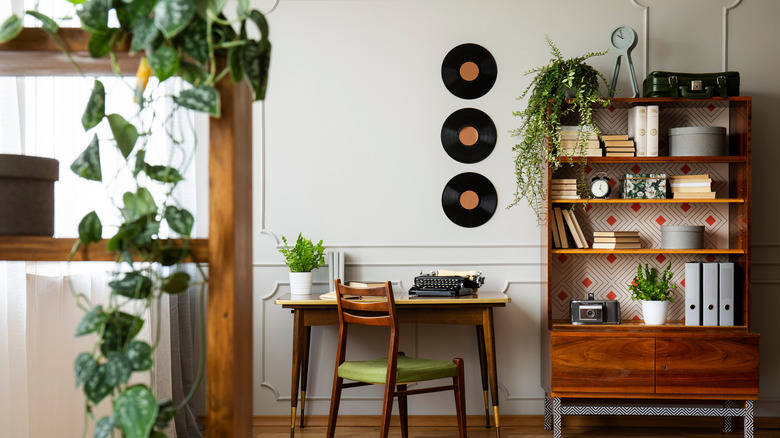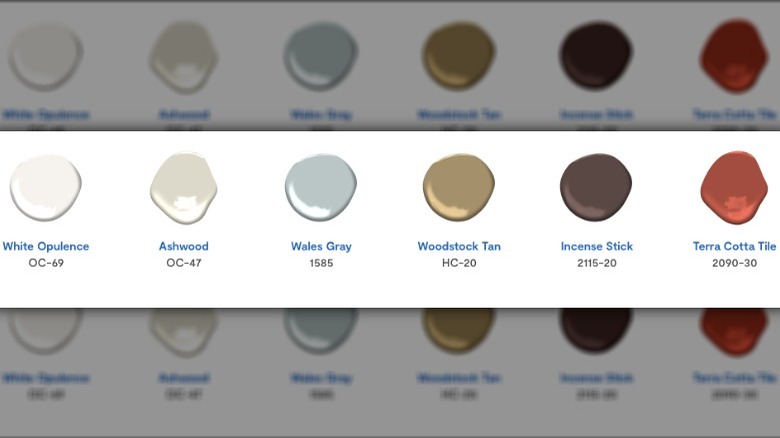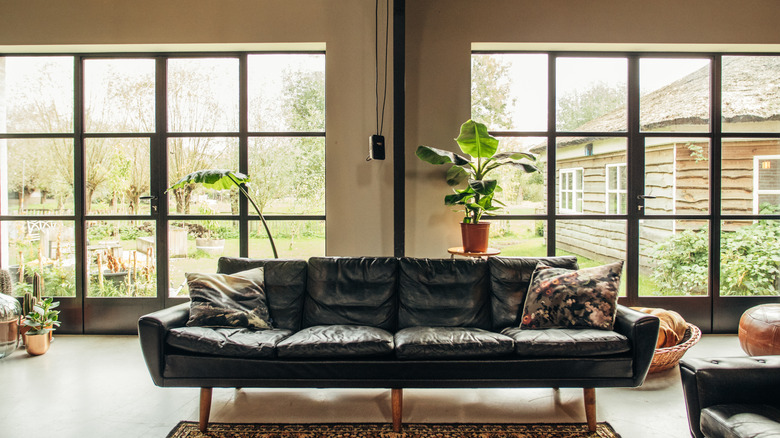The Perfect Color Palette For Your Mid-Century Modern Style Home
Mid-century modern is timeless. The interior and architectural style was a popular style from the 1940s to the 1960s, according to Foyr. The style was loved for its minimal and clean aesthetic, bringing nature and organic shapes into the home. During the height of its time period, mid-century modern was considered to be more cutting edge, but now it has a comforting retro vibe. From furniture to décor, the mid-century modern aesthetic has persisted and remains one of the most popular styles for homes in the present day.
Many opt to decorate their homes using mid-century pieces or even embrace the style as a whole. One of the keys to pulling off any style and making it look authentic is nailing the colors used in the original design. Developing a mid-century modern color palette shouldn't be difficult as the style uses colors that are still popular and trending today.
Earth tones
One of the tenants of mid-century modern design is the aspect of bringing nature inside. You'll find many mid-century homes with large homes that allow natural light to flow and enjoy the sights of the outdoors. Use this as inspiration when creating a mid-century palette by incorporating a lot of earth tones throughout the space.
Ochre, a deep yellow, and burnt shades of red are a signature of the style, according to Benjamin Moore. Using pops of other earth tones like olive green and oranges are also popular in mid-century design. You can also opt for a dusty or reddish pink to add a little bit of brightness. Pink was especially popular for exterior accents in warm locations like Palm Springs and Miami, according to Angi.
To achieve a true mid-century aesthetic, you don't only want to incorporate these colors in large features like paint on the wall. Opt for colorful pieces of statement furniture and small decorative accents throughout the room.
Neutrals for balance
Neutral colors help incorporate the outdoors, says Hammer and Headband, and can also help balance out the more vibrant colors that the mid-century aesthetic is known for. Bring in shades of brown and tan for warmth that pair well with the deep shades of reds and oranges. Besides paint, another way to bring in brown and tan is with natural wood tones, which are popular features of mid-century modern style.
You can also add white and gray to a mid-century modern palette to help bring in some brightness, making the room more open and airy. Using white in your color palette also provides a backdrop where you can show off colors and patterns in the other details of your home, according to Angi. Darker grays are a great option if you're looking for a neutral but don't want the starkness of white. Opting for neutral walls can allow you to experiment with more color in the details, which can be more fun when designing a space.


